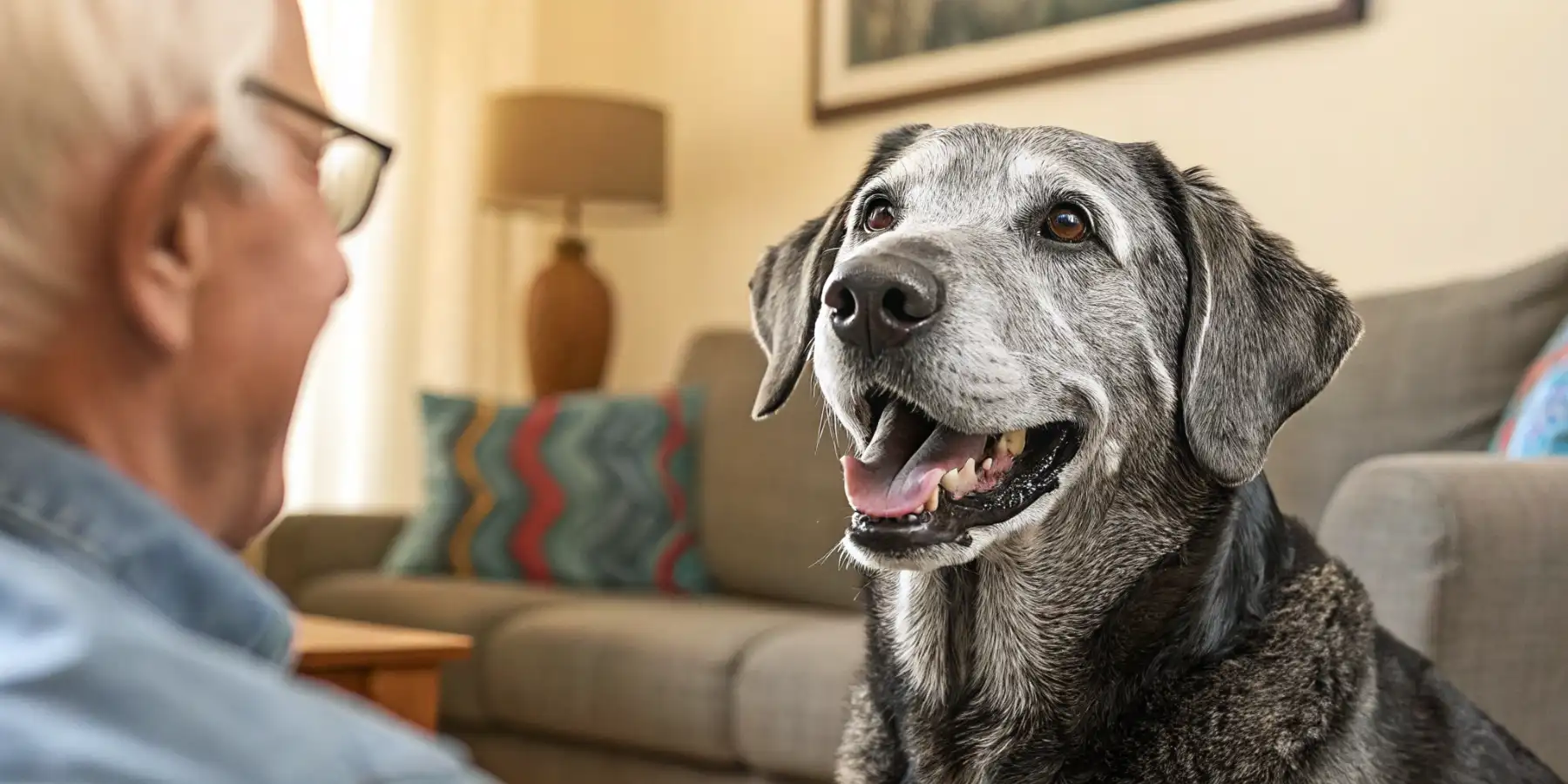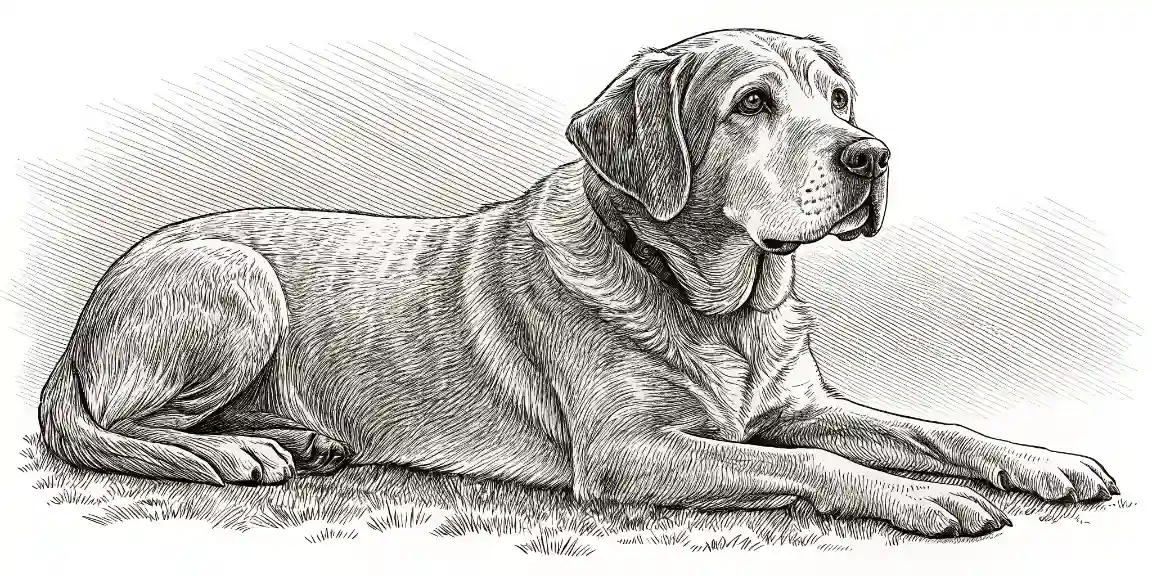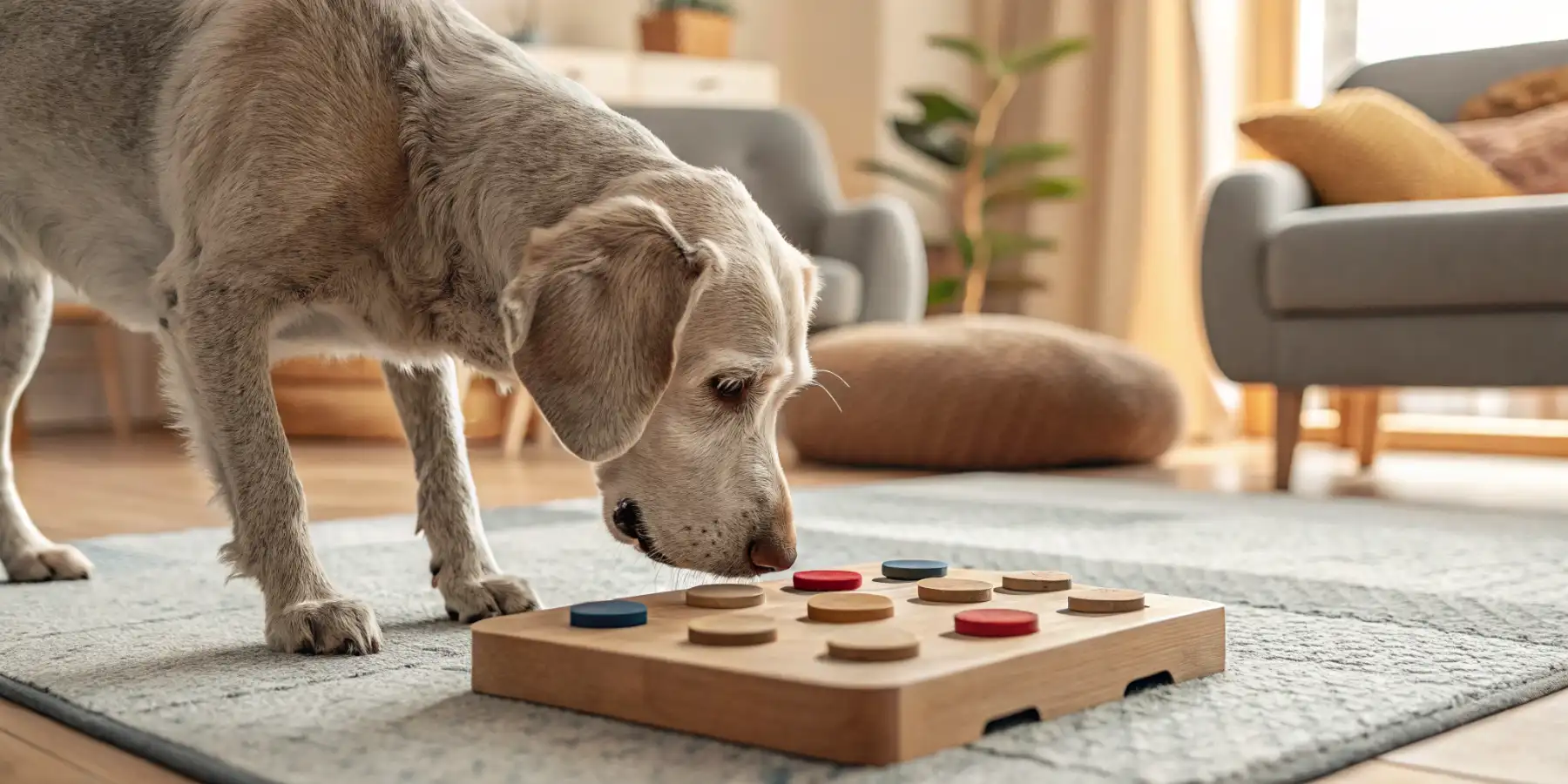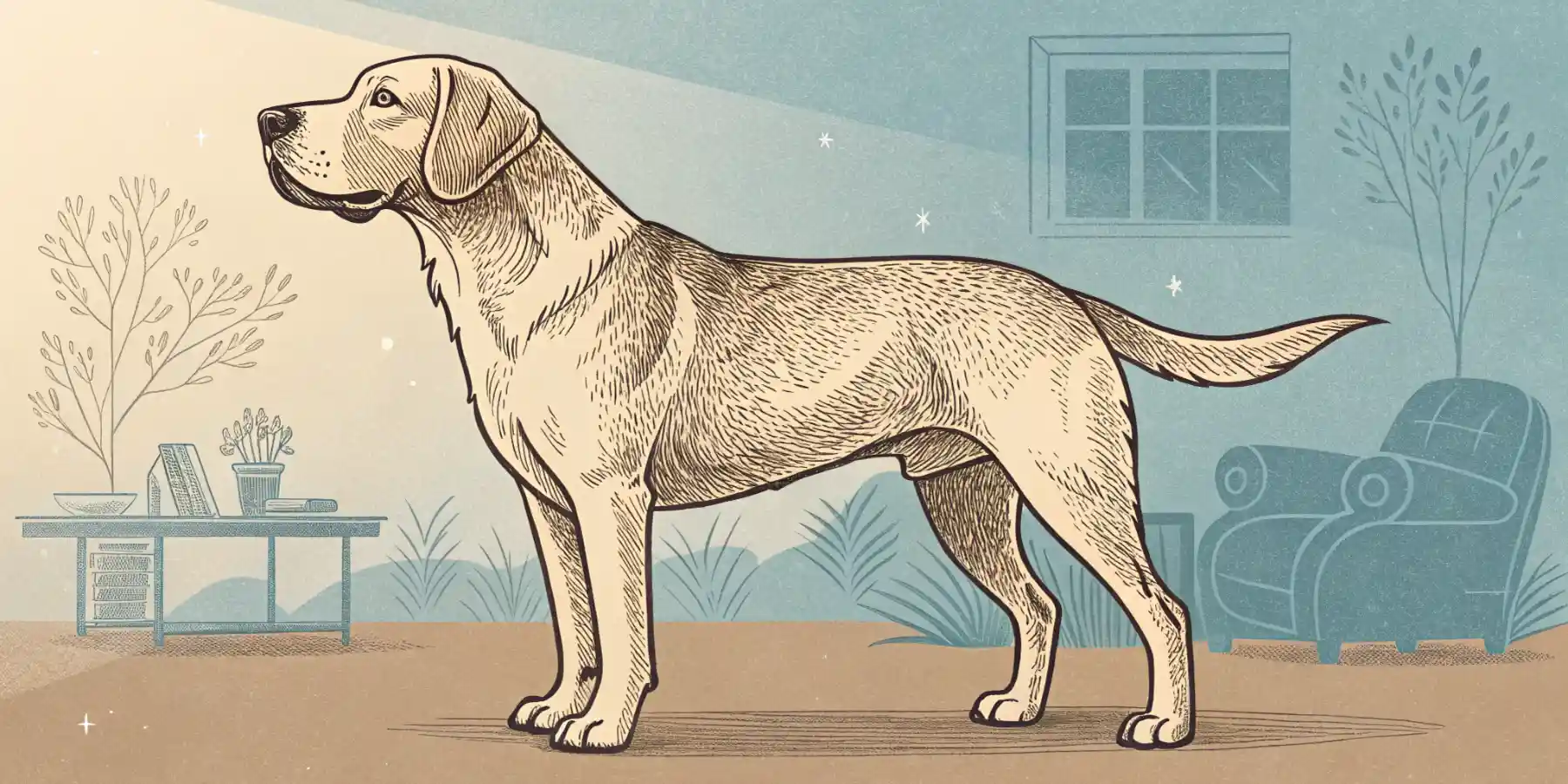
Dog Aging: Spot the Subtle Signs
Is your dog slowing down? 🥺 Spot subtle signs of dog aging & learn how to keep your senior dog happy & healthy! ➡️
Recognizing the Signs of Aging in Your Dog: Subtle Changes to Watch For
As much as we wish they could stay puppies forever, our canine companions inevitably begin to show their age. Recognizing the signs of aging in your dog early is crucial for ensuring their comfort and quality of life in their golden years. It’s not just about graying muzzles; it’s about noticing subtle changes that might indicate underlying health issues. As a veterinarian tech, I’ve seen firsthand how early detection can make a world of difference in managing age-related conditions and providing the best possible care.
Mobility Changes: More Than Just “Slowing Down”
One of the most common and noticeable signs of aging in dogs is a change in their mobility. While a slight decrease in energy might seem normal, pay close attention to these more specific signs:
- Stiffness: Watch for stiffness, especially after waking up or after periods of rest. This could indicate arthritis or other joint problems.
- Difficulty with stairs: Is your dog hesitant to climb stairs or jump onto furniture? This is a significant indicator of pain or reduced mobility.
- Limping: Even an occasional limp warrants a veterinary check-up. Don’t dismiss it as “just a little strain.”
- Changes in gait: A shuffling gait or a reluctance to walk as far as they used to can also be signs.
In my experience, many owners attribute these changes to “just getting old” and delay seeking treatment. However, early intervention with pain management, supplements like glucosamine, and modified exercise routines can dramatically improve your dog’s comfort and mobility. If you notice your dog having difficulty jumping on the couch, consider getting them a pet ramp to ease their joints.
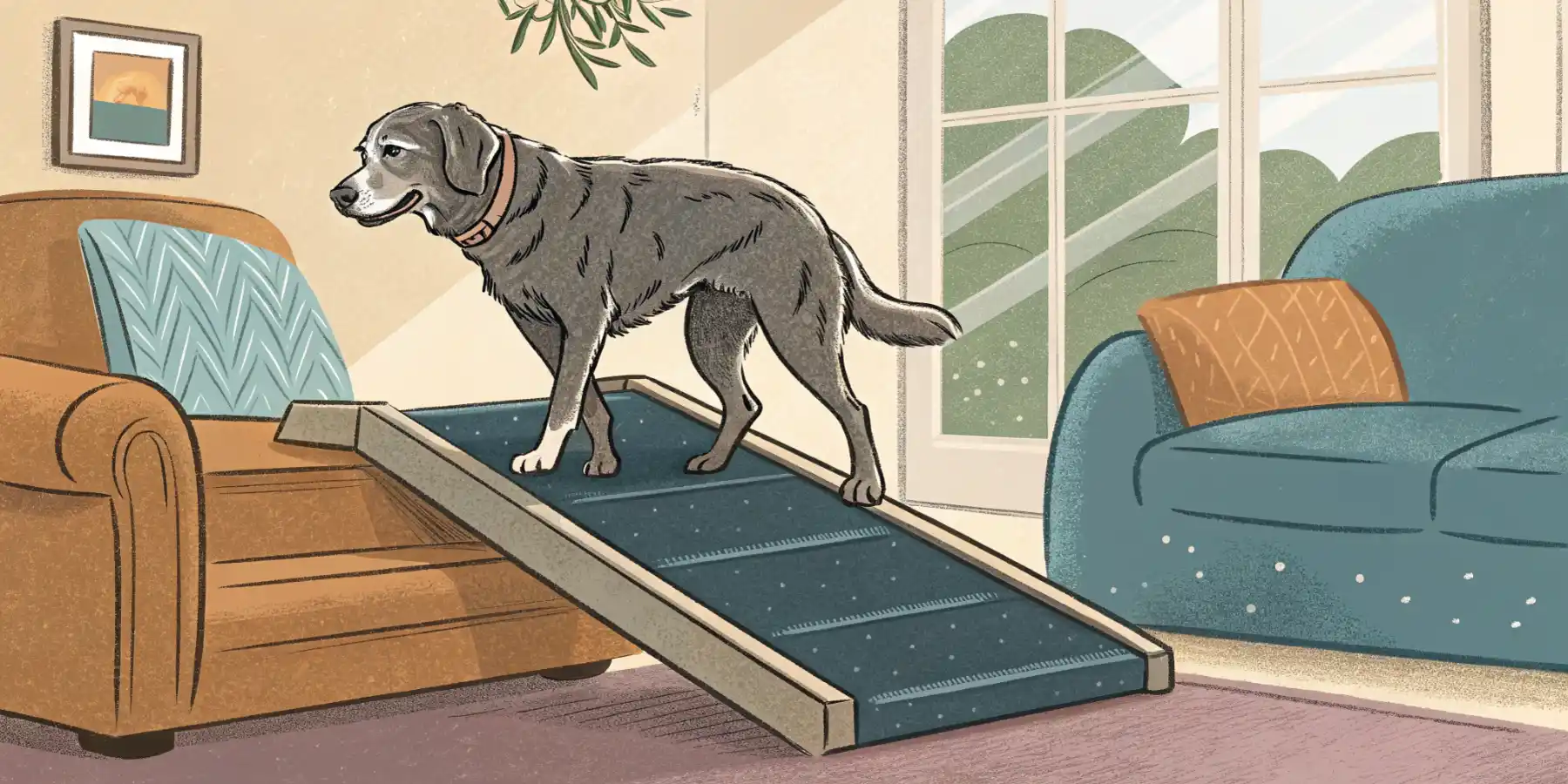 A senior dog using a ramp to access the couch, a good way to ease joint pain and mobility issues.
A senior dog using a ramp to access the couch, a good way to ease joint pain and mobility issues.
Cognitive Decline: Is it Just Forgetfulness?
Just like humans, dogs can experience cognitive decline as they age, often referred to as canine cognitive dysfunction (CCD). While it can be heartbreaking to witness, understanding the signs can help you provide the necessary support and care.
- Disorientation: Getting lost in familiar places, staring blankly at walls, or seeming confused.
- Changes in sleep patterns: Sleeping more during the day and being restless or awake at night.
- House soiling: Accidents in the house, even if your dog has been reliably house-trained for years.
- Changes in social interaction: Becoming less interested in playing or interacting with family members.
CCD can be a challenging condition, but there are treatments and strategies that can help manage the symptoms. Medications, dietary changes, and mental stimulation can all play a role in improving your dog’s cognitive function and quality of life. I believe that mental enrichment activities, like puzzle toys and short training sessions, are particularly beneficial for keeping their minds sharp.
Sensory Changes: Vision and Hearing Loss
Vision and hearing loss are also common as dogs age. While they may adapt remarkably well, it’s important to be aware of these changes and adjust your approach accordingly.
- Cloudy eyes: A bluish haze in the eyes is a common sign of lenticular sclerosis, which usually doesn’t significantly affect vision. However, it can be confused with cataracts, which do impair vision.
- Bumping into things: This could indicate vision loss or other neurological issues.
- Not responding to commands: If your dog isn’t responding to verbal commands, it could be a sign of hearing loss.
- Increased startle response: A sudden increase in being startled easily can also indicate hearing loss.
If you suspect your dog is experiencing vision or hearing loss, consult with your veterinarian for a thorough examination. In my experience, making simple changes to your home environment, such as avoiding rearranging furniture and using hand signals instead of verbal commands, can help your dog navigate more easily.
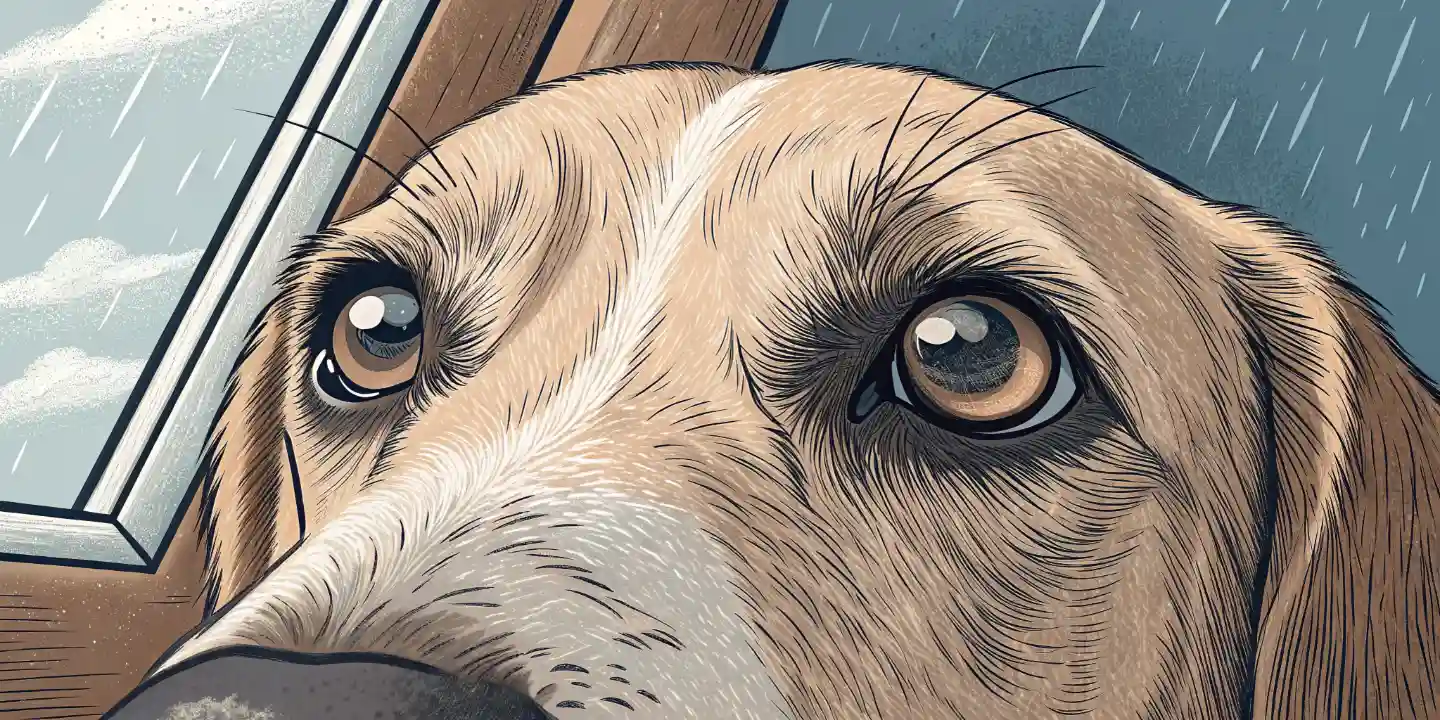 Cloudy eyes in a senior dog may indicate lenticular sclerosis or cataracts, both common age-related conditions affecting vision.
Cloudy eyes in a senior dog may indicate lenticular sclerosis or cataracts, both common age-related conditions affecting vision.
Other Physical Changes: What to Look For
Beyond mobility, cognition, and sensory changes, there are other physical signs of aging to watch for:
- Changes in appetite or weight: Weight loss can be a sign of underlying health problems, while weight gain can exacerbate joint issues.
- Dental problems: Bad breath, excessive drooling, and difficulty chewing can indicate dental disease, which is extremely common in older dogs. Schedule regular dental cleanings and consider dental chews to help maintain oral health.
- Skin changes: Dry skin, lumps, and bumps are more common in older dogs. Be sure to have any new lumps or bumps checked by your veterinarian.
- Increased thirst or urination: These can be signs of kidney disease or diabetes, which are both common in older dogs.
The Importance of Regular Veterinary Check-ups
The key to ensuring your senior dog enjoys a comfortable and happy life is to schedule regular veterinary check-ups. As they age, twice-yearly check-ups are recommended. These visits allow your veterinarian to detect any underlying health issues early and develop a plan to manage them.
 A veterinarian performing a check-up on a senior dog to monitor their health and detect any age-related issues early.
A veterinarian performing a check-up on a senior dog to monitor their health and detect any age-related issues early.
Don’t wait until your dog is showing obvious signs of illness to take them to the vet. Preventative care is essential for maintaining their health and quality of life. During these check-ups, be sure to discuss any concerns you have about your dog’s behavior or physical condition. Your veterinarian can provide personalized advice and recommendations based on your dog’s individual needs. And remember, addressing common health problems in aging dogs early is vital for ensuring a longer, healthier life for your beloved companion. Knowing how to care for older dogs with arthritis is also something to keep in mind, as arthritis is a frequent issue for older canines.
Ultimately, recognizing the signs of aging in your dog is an act of love. By being observant and proactive, you can help your furry friend enjoy their golden years to the fullest. And that’s the best gift you can give them.
